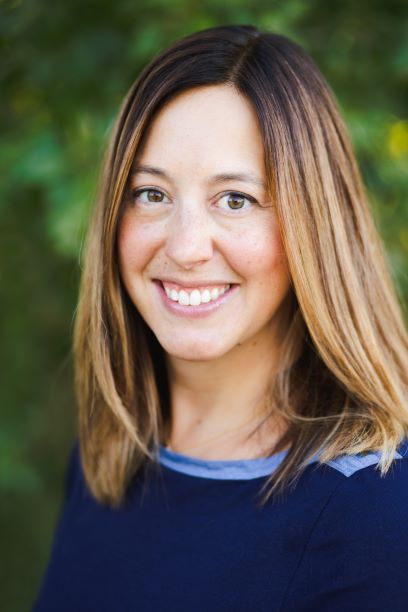What is Triadic Supervision and How Does It Benefit Counselors?
By Shannon Heers
Becoming a fully licensed counselor is an exciting (and sometimes overwhelming) journey. You’re gaining experience, learning on the job, and figuring out how to navigate the complexities of clinical work. One key piece of this process? Clinical supervision.
You’ve probably heard about individual and group supervision, but what about triadic supervision? If you’re a provisionally licensed counselor (LMHCA) in Washington, this could be a great fit for your clinical growth. Let’s break it down.

What is Triadic Supervision?
Triadic supervision is a structured form of clinical supervision where two supervisees meet with one clinical supervisor. It’s like a hybrid between individual and group supervision—small enough for focused attention but dynamic enough to foster collaboration.
In Washington, the Washington Administrative Code (WAC 246-809-334) allows triadic supervision to count toward licensure requirements, just like individual supervision. This means you get quality oversight while also benefiting from peer learning.
Think of it as therapy’s version of a buddy system—except instead of just moral support, you get guidance, feedback, and growth all in one session.
How Does Triadic Supervision Work?
Triadic supervision typically follows a structured approach. Sessions might include:
- Case presentations – You and your co-supervisee take turns presenting cases, discussing interventions, and getting feedback.
- Skill-building exercises – Your supervisor might guide you through role-plays, ethical decision-making scenarios, or clinical documentation tips.
- Mutual learning – You benefit from your supervisor’s expertise and your peer’s perspective, which can broaden your clinical skills.
Since it’s just you, one other counselor, and your supervisor, you still get plenty of individualized feedback. But the added dynamic of another supervisee brings fresh insights.
The Benefits of Triadic Supervision for Counselors
So, why choose triadic supervision over individual or group supervision? Here’s why it might be the sweet spot for your clinical growth.
More Affordable Than Individual Supervision
Let’s be real—supervision can get expensive. Since you’re splitting the session with another supervisee, the cost per person is lower than individual supervision. That means you can get high-quality guidance without blowing your budget.
More Personalized Than Group Supervision
Group supervision is great for exposure to different cases, but it can sometimes feel overwhelming or impersonal. With triadic supervision, you get individualized attention while still benefiting from a peer’s input.
Double the Perspectives, Double the Growth
Ever feel stuck on a case? With triadic supervision, you’re getting feedback from both your supervisor and your peer. Your co-supervisee might ask a question you never thought of—or share an approach that totally shifts your perspective.
Real-World Collaboration Practice
Counseling isn’t a solo sport. In the real world, you’ll collaborate with other therapists, medical professionals, and caseworkers. Triadic supervision helps you get comfortable sharing insights, giving and receiving feedback, and learning in a supportive environment.
Built-In Professional Support System
The licensure journey can feel isolating. Triadic supervision gives you a built-in peer support system. You’re not just learning together—you’re also navigating the ups and downs of becoming a fully licensed therapist side by side.
Is Triadic Supervision Right for You?
Every counselor has different learning needs. Triadic supervision might be a great fit if you:
- Want a mix of personalized supervision and peer learning.
- Are looking for a budget-friendly alternative to individual supervision.
- Enjoy discussing cases and learning from others’ clinical experiences.
- Prefer a structured but flexible approach to supervision.
However, if you thrive on one-on-one attention and prefer deep dives into your cases without another supervisee present, individual supervision may be a better fit.
How to Find Triadic Supervision in Washington
If triadic supervision sounds like your jam, the next step is finding a qualified supervisor offering this format. Here’s how to start your search:
- Check State Licensing Board Listings – The Washington State Department of Health website has a list of approved supervisors.
- Network with Other Counselors – Ask colleagues, peers, or even your grad school contacts for recommendations.
- Search Online Directories – Websites like TherapyDen, Psychology Today, and professional counseling organizations often list clinical supervisors.
- Join Professional Groups – Washington-based counseling Facebook groups or LinkedIn networks can be great places to ask about supervision opportunities.
- Contact Firelight Supervision – The experienced clinical supervisors at Firelight Supervision offer virtual triadic supervision.
Final Thoughts
Triadic supervision is a fantastic middle ground between individual and group supervision. It offers affordability, collaborative learning, and real-world skill-building—all while counting toward your licensure hours in Washington.
So, if you’re looking for a way to grow your clinical skills, save some money, and gain peer support along the way, triadic supervision might just be the perfect fit.
How we can help
If you’re ready to find the right supervisor, start exploring options today by booking a free phone consultation. Your journey to licensure just got a little more collaborative!
Author Bio
 Shannon Heers is a psychotherapist, approved clinical supervisor, guest blogger, and the owner of a group psychotherapy practice in the Denver area. Shannon helps adults in professional careers manage anxiety, depression, work-life balance, and grief and loss. Follow Firelight Supervision on Instagram and Facebook.
Shannon Heers is a psychotherapist, approved clinical supervisor, guest blogger, and the owner of a group psychotherapy practice in the Denver area. Shannon helps adults in professional careers manage anxiety, depression, work-life balance, and grief and loss. Follow Firelight Supervision on Instagram and Facebook.



